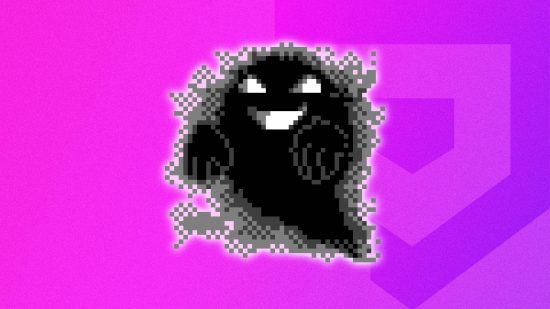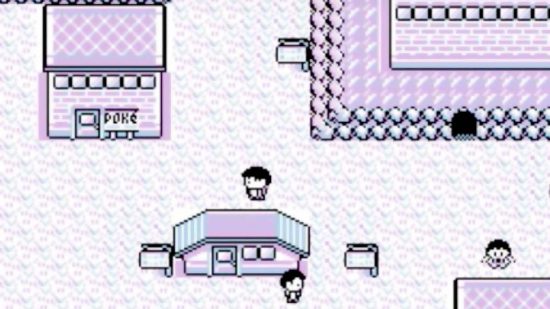So many moments from the original Pokémon generation are stuck in my brain. Seared like a cattle brand, if I’m ever bored I can shut my eyes and essentially imagine a playthrough of Red or Blue from start to finish. Those moments are entangled with a lot of formative memories, and among the cheerful and often amazing pockets of monster-catching, are some surprisingly dark secrets.
The cuddly design of Pikachu and the squeaky-clean branding betray a dark underbelly, one that is essential to the Pokémon tone. Plus, it’s a dark streak in Pokémon’s very first moments, with even the fledgling steps of this near 30-year-old franchise being fraught with terrifying Pokédex entries and some deeply unsettling lore.
To celebrate the spooky season, we’re diving into just why these creepier moments work so well in Pokémon, and what they add to the franchise as a whole. There’s a reason many folks love the terrifying stories behind creatures like Drifloon and Mimikyu, and it’s the smart balance of cute and dangerous that only a wildly imaginative world like Pokémon’s can create.
First of all, it’s important to reiterate that Pokémon is a children’s franchise first and foremost. Any perceived danger in Pokémon sits alongside one of the safest and most serene worlds in the Nintendo canon that countless younger gamers feel safe to explore. Pokémon feels exciting and rich, but it very rarely needs to feel dangerous. That’s what makes the creepy elements work.
So many people love fairytales, ghost stories around the campfire, and even haunted houses. Like a good scary movie, it’s utterly essential to some people to flex those scary muscles in relative comfort, nudging the edges of our safety zone with perceived terror, allowing us to enjoy the thrill of a chase without ever needing to be in danger.
Pokémon doesn’t do anything quite on the level of Nightmare on Elm Street, but there is a Nightmare in Lavender Town, and it’s the origin of this spooky streak that I adore in my favorite franchise. Imagine being a kid with your eyeballs pressed tightly up against the Game Boy screen. The adorable designs of Charmander or Squirtle accompany you on an adventure through this bright and hopeful new world, where you can catch an astonishing 150 (yeah this was years ago) of these fascinating little folks.
Then, about halfway through the game, you stumble into the somber and even dour village known as Lavender Town. The home of the Pokémon Tower, a place where trainers lay dead Pokémon to rest. Not knocked out by the likes of that idiot Gary Oak, actually dead, deceased, finito, shaken off their mortal coil like a Spinda trapped in a hula hoop. I cannot explain the absolutely gut-wrenching effect this had on me as a kid, realizing that the little creatures I’ve been wantonly obliterating are capable of simply perishing. So many Caterpie, lost, like tears in the rain.
Not only is this chilling realization a key part of the original Pokémon game, but it gets darker. Climb the Pokémon Tower and several ghost Pokémon greet you, with the likes of Gastly and Haunter attempting to stop your ascension through the tower of the afterlife. Another key player is a lonely Cubone, crying because its mother is now dead.
Then, upon reaching the top of the tower, if you equip the Silph Scope, you spy that the final spectral opponent is none other than Marowak, the dead mother of the bawling Cubone you met mere moments ago. What do you have to do? Why, defeat Marowak in battle, helping to put its soul to rest with a decent thrashing.
It doesn’t even stop there, as later in the game you explore Cinnabar Island, and upon exploring the decrepit building you discover among the rubble, the signs of a scientific experiment gone wrong and lives lost. Hints from journal entries scattered across the mansion explain that scientists found Mew buried deep in a jungle, and attempts to clone it backfired, creating Mewtwo, a being much more powerful and terrifying than the original placid entity they found.
Diary entries span across the summer months, with an early entry in July saying, “We discovered a new Pokémon deep in the jungle” before days later, another entry adds, “We christened the newly discovered Pokémon Mew.” Then, the final diary entry gives off an eerie sense of foreboding, a hint towards the most powerful Pokémon in the first generation, and a precursor to the fight waiting for you at the end of the game.
“Diary: Sept. 1
Mewtwo is far too powerful.
We have failed to curb its vicious tendencies…”
While it’s one thing to experience terror while reading tiny pixelated text on a greyscale screen without a backlight (it was still spooky, mainly thanks to Lavender Town’s genuinely harrowing theme) it’s another to see things on the big screen. Pokémon: The First Movie was a cultural phenomenon, and kids all across the planet were shaking their Meowths to get enough coins for a cinema ticket. I was front and center of the cinema screen the first day I could attend, with several close pals flanking me, ready for our Pokémon adventures from the TV to finally be stretched across the silver screen.
I am 34 years old, and I still cry at Pokémon: The First Movie. Ash and pals get caught up in a fight between Mew and its lone clone Mewtwo, before 2 Fast 2 Mew the evil doppelganger uses its own clone army to battle Ash Ketchum, Brock, Misty, several other trainers, and all their Pokémon. Every single ‘mon that each trainer brings squares up against an evil version, signified with stripes. Evil stripes. Plus they all battle to the very end, caught in a ceaseless violence emboldened by Mewtwo’s anger and confusion at being created.
Finally, Mewtwo and Mew, while locked in battles, absolutely wreck Ash Ketchum. They turn the kid into stone. The electric Pokemon Pikachu spends several agonizingly quiet moments in the massive arena zapping its petrified owner, desperately trying to jolt our beloved protagonist back from his concrete nap, to no avail. The sheer desperation in Pikachu’s exhausted zaps is palpable and still gets me, and caused a swathe of children to weep uncontrollably in my cinema screening. Those poor parents. Then, through the power of love or something, all the Pokémon cry and their tears bring Ash back to life.
So yes, Pokémon traumatized my childhood, and I loved it. Look I know it’s a silly little franchise aimed at people a third my age, and the world of Pokémon is far more interested in plucky protagonists and cheerful friends than it is anything spooky. But the occasional dips into the macabre add depth to this world. You know that feeling when you learn about some cryptid or spooky story and you can’t stop reading? Pokémon provides this in so many different ways.
Later games and their accompanying Pokémon add much more texture to the terrifying side of this franchise. I mean, even having a ghost type implies something quite sinister, but several of our amenable apparitions tip the scales from ‘awww’ to ‘ahhhhhh’ thanks to their backstory. Drifloon and its evolution Drifblim appear like children’s balloons in hopes of ensnaring them, a frankly terrifying concept ripped straight out of Steven King’s ‘IT’. In HeartGold and SoulSilver, Drifloon’s Pokédex entry states, “It is whispered that any child who mistakes Drifloon for a balloon and holds on to it could wind up missing.” Yeah, thanks, I won’t sleep ever again.
I’ve got around 100 favorite Pokémon at this point, and on any given day my list of the top creatures depends on the weather, my mood, and what I had for breakfast. However, the desperately sad ghost-type Mimikyu has been a firm fixture ever since my trip through Alola. This Pokémon is actually a dark creature hidden underneath the rags that makes itself look like Pikachu to get close to people and finally feel love.
In Pokémon Moon, Mimikyu’s Pokédex entry reads, “A lonely Pokémon, it conceals its terrifying appearance beneath an old rag so it can get closer to people and other Pokémon.” Yeah, pretty sad, I know. Oh, by the way, Mimikyu’s other ‘busted’ form is the creature with a broken neck. In Pokémon Ultra Sun, this specific busted form has a Pokédex entry stating, “It stands in front of a mirror, trying to fix its broken neck as if its life depended on it. It has a hard time getting it right, so it’s crying inside.” Are you kidding me with this? If Mimikyu was a dog in the shelter I’d already be running down the street buying kibble and squeaky toys by the truckload.
There’s way more to it, like the story of Giratina and the journey through the Distortion World. Everything about Darkrai is genuinely unsettling, honestly, and even the bleached white of Cursola is a frank reminder of what we are doing to the real world. Pokémon is sickly sweet, even saccharine at times, and that’s why it works so well alongside a healthy dose of creepy to keep the world exciting, engaging, and surprising.

We play games to escape, and if I want to be truly scared I’ll boot up Silent Hill, but I appreciate that Pokémon built its empire with one toe dipped firmly into the spooky pool. It allows for the series to add some unsettling moments all throughout its history, and often those sad or even morbidly fascinating moments stick in our minds. If Lavender Town taught me anything, it’s that I’ll remember crying after Ghost-busting Cubone’s mum into the great beyond just as much as I’ll remember my first level 100 Charizard. Stay creepy Pokémon, we love you for it.
If all this spooky Pokémon lore makes you want to dive into the series, be sure to check out our guides to the best Pokémon games and the best games like Pokémon next.





